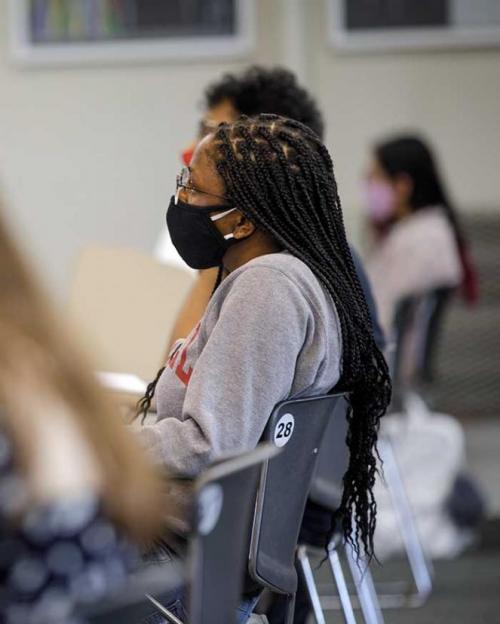As course enrollment opens up this week, students in the College of Arts & Sciences have access to dozens of new courses for spring 2021, thanks in part to the College’s new curriculum, which took effect this fall for students in the class of 2024.
The new curriculum focuses on the theme of exploration and reaffirms the college’s commitment to a liberal arts and sciences education. Changes make the curriculum easier for students to navigate, simplify the graduation requirements and expand student opportunities for interdisciplinary work and faculty opportunities for innovative teaching.
The 10 new distribution areas are: Arts, Literature, and Culture; Social Difference; Biological Sciences; Physical Sciences; Ethics and the Mind; Social Sciences; Global Citizenship; Statistics and Data Science; Historical Analysis; and Symbolic and Mathematical Reasoning.
The categories of data science, global citizenship and social difference are new this fall and, while there are always a number of new classes offered each semester in the College, the new requirements are prompting the creation of extremely diverse offerings, said Rachel Bean, senior associate dean for undergraduate education.
Some of those new classes include:
- Anthropology of Global Health, taught by Associate Professor Alex Nading
- Oil, Ghosts and Beauty Queens, taught by Irina R. Troconis, assistant professor of Latin American studies in the Department of Romance Studies
- Millennial Jewish Stars: Race, Gender & Sexuality, taught by Jonathan Branfman, visiting assistant professor of English
- Introduction to Humanities: Black Melodrama and Introduction to Humanities: Science in Human Culture, both offered by the new Humanities Scholar Program in the College.
“The aim of this course is to critically examine efforts to improve human health over time; unlike many scholars of global health, anthropologists focus their work on — and draw their critiques from — the perspectives of the people who are the targets of those efforts,” said Nading, who has been studying global health for 15 years, examining efforts to combat dengue fever in Nicaragua and later studying the relationship between climate change and health.
“We are living through perhaps the biggest test of the global health system in human history, COVID-19,” he said. “Though this is probably not the only course that deals with issues such as pandemics, my hope is that this one will help students situate our current moment in a longer history and more expansive geography.”
Troconis, who is from Venezuela, explores the images that have defined that country’s national identity in her new course.
“This course explores the different mechanisms at play in the act of imagining the nation, and the ways in which art defines how a nation imagines itself,” said Troconis, who researches the politics of memory in Latin America. “The course also informs realities outside of the geographic situation of Venezuela; it connects to the situation of this nation, in light of our political and economic turmoil and the pandemic.”
The course’s broad content will make it interesting for students with interests ranging from economics to gender studies to horror to languages, she said.
“My classes always include a plethora of majors and I give them a lot of room to experiment with their own interests.”
Branfman’s research focuses on how today’s newest media mobilize much older racial stigmas, and how racial antisemitism intersects with both Blackness and whiteness in 21st-century American media.
He describes his new class this way: I often hear students ask, “Drake is Jewish?! But he's Black!” “Zac Efron is Jewish?! But he's so white and buff!” These common questions reflect widespread stereotypes about how Jews "should" look, stereotypes that stem from a racial history few Americans understand. Our class will reveal that history and analyze how millennial Jewish stars like Drake, Efron, Tiffany Haddish and Amy Schumer juggle these racial, gendered and sexual tropes about their Jewish bodies.”
The class content is ever more relevant, he said, as recent national events illustrate that racial antisemitism remains present and deeply connected to anti-Black racism, Islamophobia and xenophobia in America today.
“However, few Americans grow up with the tools to analyze racial antisemitism, where it comes from, or how it overlaps and differs from related oppressions,” he said. “For instance, how can a white-identified Jewish actor like Seth Rogen simultaneously experience white privilege and racial antisemitism? How can a Black Jewish woman like Tiffany Haddish experience antisemitism if she doesn't "look Jewish?" How can we tackle these questions without falsely conflating antisemitism with color-based racism?” These are the questions we’ll untangle in our course





